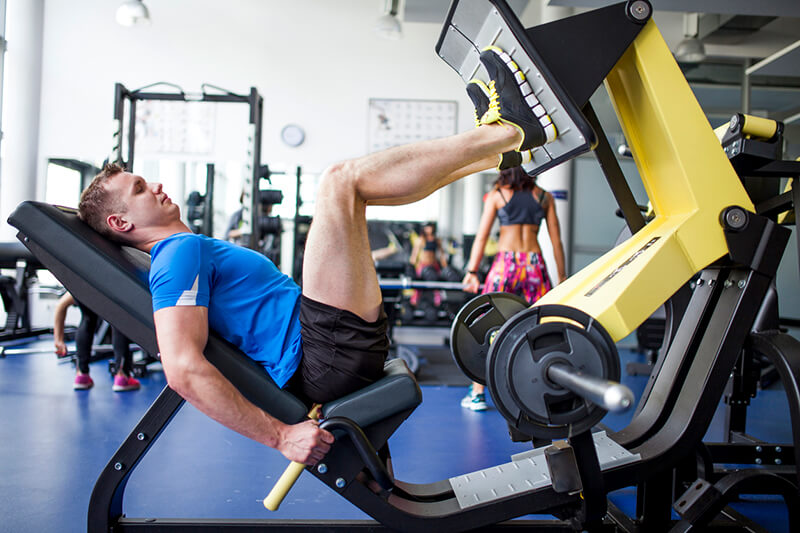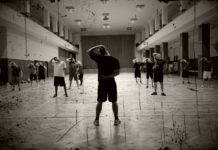There are multiple types of exercise and strength training is one of them. It is an exercise that uses resistance to lead to muscular contraction. It Increases muscular strength, bone density, and skeletal muscles. During the exercise, neurotransmitter brain-derived neurotrophic factor or simply BDNF helps in developing the ‘strength muscles’ in our body. However; it also acts negatively to reduce endurance muscle fiber.
Effect of Strength Training
Although, strength training keeps our muscles strong. However; it comes with an expense. For many years the scientists were familiar with some of the adverse effects of strength training. After multiple studies, we are aware that this type of training decreases the quantity of fiber in endurance muscles.
The studies now provide us with the reasoning of the phenomenon. Further; it will be beneficial in providing details about synapses and age-related muscle atrophy.
Role of BDNF
The primary contributor during the strength training is neurotransmitter brain-derived neurotrophic factor or BDNF. Scientists were trying to observe the effects of BDNF during muscle strength exercise.
After studies, scientists had a conclusion that BDNF is a production fo the muscles. BDNF can remodel the synapses and age-related muscle atrophy. The synapses or scientifically, neuromuscular synapses is a junction between the body muscle and motor neurons.
Furthermore; studies also show that BDNF is not only responsible for helping building strong muscles, but is also reducing the fibers in the endurance muscles.
As we discuss BDNF we should note that two types of muscles have a relation with BDNF. The type of muscles depends on the type of fiber they are having; slow-twitch or faster-twitch.
If the muscles have slow-twitch fiber, they are endurance muscles. These types of muscles have a connection with endurance sports. A common example of the sport is the marathon race.
Now, if the muscles have fast-twitch fiber, they are the ‘strength muscles’. These types of muscles have a connection with strength training. Further, they are also responsible for providing high muscular strength.
The procedure of Negative Effects on Endurance Muscles
Till the moment, we have an understanding of BDNF and its effects on endurance muscles. However; we should understand the procedure which causes adverse effects. Experts are stating that as BDNF is remodeling the neuromuscular synapses, it grows more ‘strength muscles’.
Science informs us that during the release of BDNF by the muscles, the endurance muscle goes through a transformation. These muscles later become the ‘strength muscles’. The procedure makes the BDNF a dual-factor in the procedure as it releases from the muscle and later converts the type of muscle.
BDNF relation with Age-related muscle atrophy
As we are getting successful in the field of science and technology, we are now understanding the relationship between BDNF and other factors of our body. Now, multiple training centers and trainers are taking care of the BDNF relationship with strength training.
Trainers and the experts are coming up with a way to avoid the reduction of endurance muscle while training. Most of the sports have this BDNF phenomenon and it is now part of the training plan. High-performance sports like rowing is the major receiver of modern training plans.
Rowing and other similar sports have a focus on building muscles and strength. After studies and expert opinion became famous, the coaches are considering the muscle remodeling procedure for the athletes.
The scientists are always conducting follow-up researches for previous studies. So, they were able to find that BDNF has a connection with age-related muscles as well. It is a belief that the muscles without BDNF have a low function of age-related muscle mass. The result was surprising for the team conducting the research.
Muscle Loss Prevention
We now understand that as a result of strength training, we face a decrease and loss of endurance muscles. However; we can’t stop training complete with fear of muscle loss. Therefore, along with studying the relationship between strength training and muscle loss, scientists were also searching method to avoid the loss.
There are a couple of ways to prevent muscle loss. We can modify our training plans to come up with a solution. Further; we can change our nutrition and diet plans for muscle loss solutions.
Muscle Loss Prevention Training
The important aspect of the prevention of muscle training is incorporating endurance training in your heavy training. We need to keep a balance between the two types because if you are increasing the endurance training, you would increase your stamina but will end up losing the power, strength and muscle size.
Our body has a high adaptive ability. The body can adapt to the type of training you are providing. You must plan ahead of your time. So, you can decide the least time for each training type.
Your body will be changing while you are increasing or keeping a lot of muscles. You will need a lot of oxygen and blood flow. Further; you will need a lot of energy and also need to cool down during the exercise.
The important step is to design a program that suits your body needs. If you are a heavy weight lifter or love strength training, then you must add a couple of endurance exercises in your routine. On another hand, if you have been having more focus on endurance training, you should include a couple of weight lifting sessions per week in your schedule.
Along with keeping a balance between the training types, we need a proper schedule. I would prefer consulting an expert to come up with a training schedule. In this way, we can keep a balance between the ‘strength muscles’ and endurance muscles.
Muscle Loss Prevention Nutrients
We need to adopt a different strategy for our nutrients intake to prevent muscle loss. The most important point is we should provide a standard quantity of protein and calories to our body.
Along with maintaining the nutrition amount, the timing of the nutrients in also important. We need to consult a nutritionist to come up with a diet plan which is suitable for our training procedure.
We need to take carbohydrates with protein and calories. Carbohydrates play an important role in preventing the muscles from breaking down. Every athlete and individual has a different nutrient requirement. So, we can’t devise a nutrition plan here. It is important to contact your concern nutritionist.







